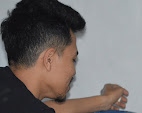While W. Eugene Smith was busy capturing the unflinching honesty of people, another photographer was busy photographing the compelling beauty in people. Irving Penn moved seamlessly from portraiture to fashion and back again, producing some of the most striking portraits of his time and proving that he was undoubtedly the 20th century's master of portraiture.
Such is the talent of Irving Penn that he has already been featured on this blog for his masterful portraiture series, "Small Trades". Fortunately, Penn's photographs are too good to be confined to only one post, so this one will feature more of the great master's works.
Penn's eye for strong contrasts and leading lines may have been rooted in his early foundation in design; as a young man, Penn studied design at the Philadelphia Museum School of Industrial Art and later joined classes taught by the great design icon Alexey Brodvitch. His first foray into commercial work was as an artist and designer for Harper's Bazaar and Vogue. It was only after some five years in the early 1940s that Penn seriously delved into the world of photography.
After his volunteer work as an ambulance driver in Italy during World War II, Penn returned to Vogue as a staff photographer. His early work as a designer flowed easily to his photography work where models were dressed in simple pieces, lit with a single source of light and photographed against a stark background. At a time when emerging photographers like Richard Avedon were experimenting with outdoor photo shoots and action shots ,Penn somehow successfully maintained the restrained style of earlier photographers like Edward Steichen.
In 1948, Penn took the idea of restraint to a whole new level with his "Corner Portraits" where subjects would pose in the corner of two intersecting walls. The awkward, wedged and uncomfortable setting brought about a different look on some familiar faces.
Going the other direction in terms of unfamiliar faces, Penn began a landmark project beginning in 1950 photographing small trade workers off the streets of Paris. The project, aptly titled "Small Trades", showcased the unsung workers of the city like carpenters and peanut vendors, akin to Lewis Hine's own project documenting manual workers some 30 years earlier.
At this point, Penn experimented with tight, close-up styles of portraiture (evident in his photographs of Truman Capote and Pablo Picasso below). These images would be the exception to his usual style of full-body portraits. His signature style returned in the 1960s when he took pictures of early hippies and the Hell's Angels which were becoming popular at that time.
Penn began to exhibit and publish more of his images beginning in the 1980s, but he continued to work for different magazines, most notably Vogue, up to his death in 2009. His images bridged the divide between the different generations in Hollywood, showing that beauty was in everyone, regardless of color or age.
The Irving Penn Foundation has a list of publications featuring the works of this 20th century portrait master, but has very few images of the photographer. Do a Google search instead. Don't forget the previous blog entry on Irving Penn's Small Trades. For published versions, try Irving Penn: Small Trades, Irving Penn: A Career in Photography and Irving Penn: Platinum Prints.





















No comments:
Post a Comment